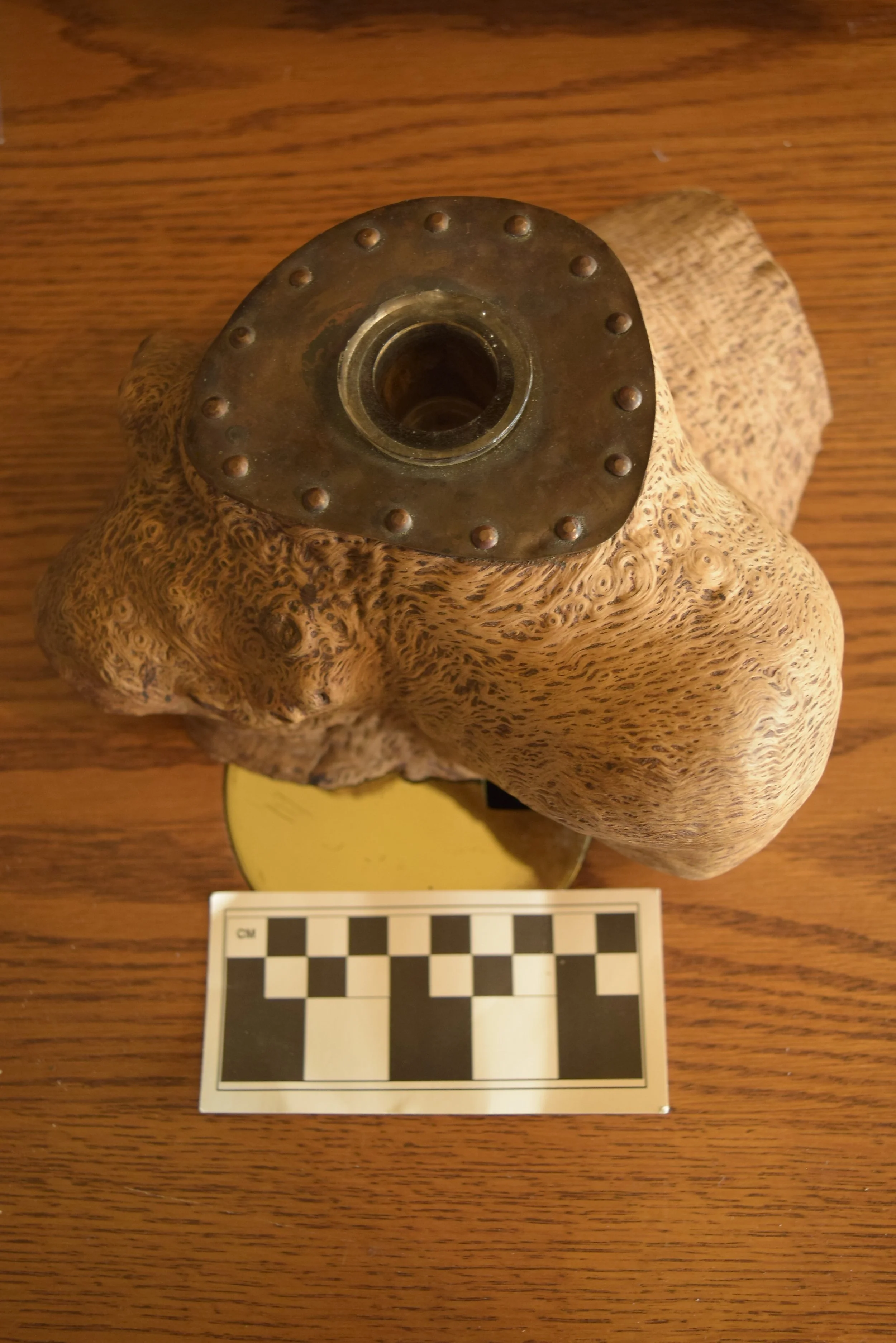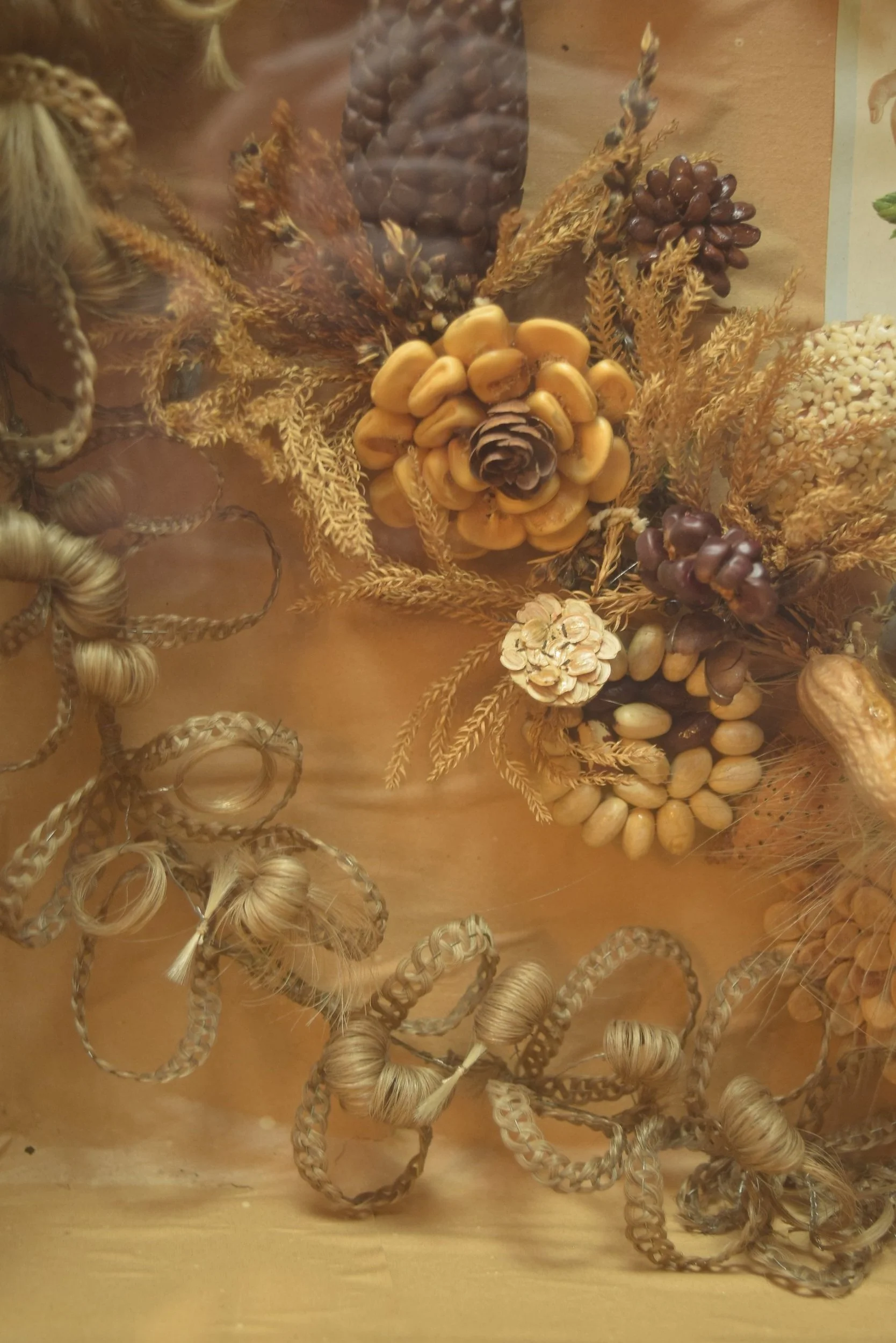Inspiration in Found Objects
Artists often draw inspiration from the world around them to create their craft, sometimes using found materials in a different context. Our exhibit, “Artists and Artisans”, showcases a range of different materials an artist may choose to work with.
In the Study, a crafter utilized a wood burl (or burr), a large growth from a tree, to create a candlestick holder. This piece was created by Alma Dippel’s grandfather, Willer, prior to 1885. The burl was sanded, the top flattened, and a hole carved to fit a shallow glass tube. Surrounding the tube, a metal “skirt” or inlay was attached. The metal may have been used to collect dripping wax and to protect the wood underneath.
In the Parlor, are a few more “fanciful” pieces of found-item artwork. One very fine example of this is called a “Harvest Wreath”. This wreath was created by Mrs. Eunice Gibbons Bidwell, in 1860, and is a popular form of wreath created during the Victorian Era. The wreath is formed from a center ring of seeds, adhered to backing material in various floral shapes. Approximately 35 varieties of seeds were used, as well as a piece of honeycomb with (what appear to be) real bees attached. The inner ring of seeds is edged by a woven ring of hair. Human hair was a popular material in wreath making during the Victorian Era, because, unlike other organic materials, hair took a long time to deteriorate. It is possible that the outer ring of hair in the Harvest Wreath may one day outlast the seeds in the middle.
Both of these items, and many other examples showcasing found-object art, are on display at the Van Orden Mansion. The Mansion is free to visitors and open Fridays and Saturdays from 12-4. Come check out all of the beautiful items handcrafted in Sauk County!




